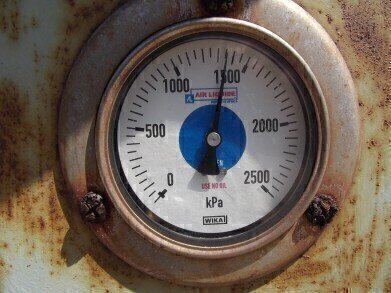Air Monitoring
What Pollutants Are Measured in the Air? - Nitrogen Dioxide
Dec 23 2021
Nitrogen dioxide (NO2) is a contaminant produced during the combustion of fossil fuels like coal, oil and gas. The pollutant is grouped with nitric oxide, sometimes known as nitrogen monoxide, (NO), to comprise NOx. Since NO can react with other particles in the air to create NO2 – and vice versa – the collective term of NOx is often used to describe both contaminants.
As well as being a danger to human health in its own right, NO2 is also a key component in the creation of ozone. As such, measuring and monitoring NOx concentrations has become a priority for governments all over the world in recent years. In the UK, there are strictly hourly and annual limits in place for the maximum level of NO2 allowed in a given location.
Where does nitrogen dioxide come from?
The majority of NOx emitted during the combustion of fossil fuels enters the environment as NO. However, NO can quickly react with ambient air and transform into NO2, which means that the latter is often viewed as the primary contaminant (even though strictly speaking, it is a secondary contaminant). Power plants used to comprise the largest source of NOx emissions, though they have since been overtaken by road traffic vehicles.
NOx is also produced in indoor environments, most commonly through the use of gas stoves or other gas-powered cooking or heating appliances, as well as tobacco smoke. While the oxidation process is much slower in indoor air than it is in ambient conditions, a lack of ventilation can mean that concentrations of NO2 build up to higher and more dangerous levels indoors than it does outdoors.
What effects can nitrogen dioxide have?
In the short term, exposure to NO2 can lead to irritation and inflammation of the eyes, lungs and heart. This can cause or exacerbate breathing difficulties, especially in those already suffering from pre-existing respiratory conditions such as asthma. Given that indoor environments enjoy reduced ventilation compared without outdoor ones, it’s believed that the human impact may be more keenly felt by those who are exposed to high levels of NO2 in an indoor setting.
However, NO2 also detrimentally impacts the environment. In either its gaseous or liquid form, it can settle upon plants and soils, disrupting the chemistry of the biomass and negatively affecting biodiversity in ecosystems that are deemed to be vulnerable. What’s more, NO2 is also a precursor to the creation of ground-level ozone, which is damaging to be both humans and the environments when it is allowed to accumulate. For that reason, the UK government have legislated that annual mean concentrations of NO2 should not exceed 40µg/m3, while singular readings of the gas should not exceed 200µg/m3 more than 18 times per year.
To learn more about all kinds of emissions and the contaminants they are capable of producing, the upcoming virtual CEM conference in March promises to deliver a wealth of information on the latest issues and developments in the industry.
Digital Edition
IET 34.2 March 2024
March 2024
Gas Detection - Biogas batch fermentation system for laboratory use with automatic gas analysis in real time Water/Wastewater - Upcycling sensors for sustainable nature management - Prist...
View all digital editions
Events
Apr 22 2024 Hannover, Germany
Apr 22 2024 Marrakech, Morroco
Apr 23 2024 Kuala Lumpur, Malaysia
Apr 23 2024 Kintex, South Korea
Apr 23 2024 Edmonton, AB, Canada


















